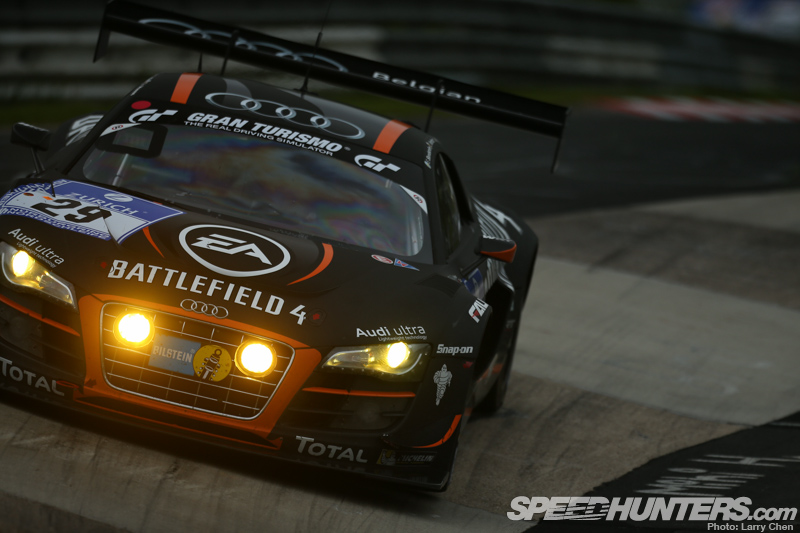
Hello all Speedhunters fans out there. My fourth attempt to win the 24 Hours at the Green Hell was a real disappointment: even though we were right up amongst the front runners during whole weekend, we failed to finish. I’ll try to point out and describe why it was so difficult this time. At the ‘Ring you always learn something new, but the basics are that you need a good team, a good car, experienced drivers and just to be well prepared.
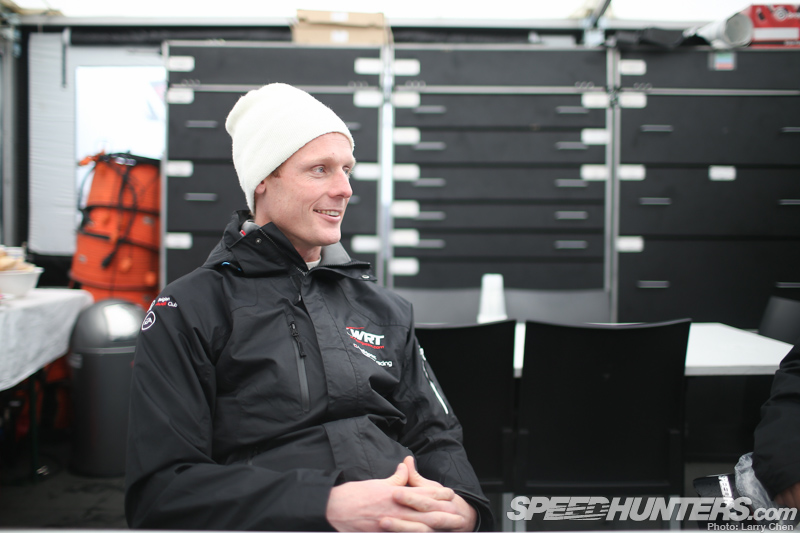
The first time I ever competed at the N24 was back in 2010 and without any super preparations. The only ambition we had at that time was to not take any unnecessary risk. For sure you don’t win with that package, but even when you go for the win, you’ve got to be clear about what level of risk you can afford to take. Because N24 always bites back when you ask to have too much of the cake…
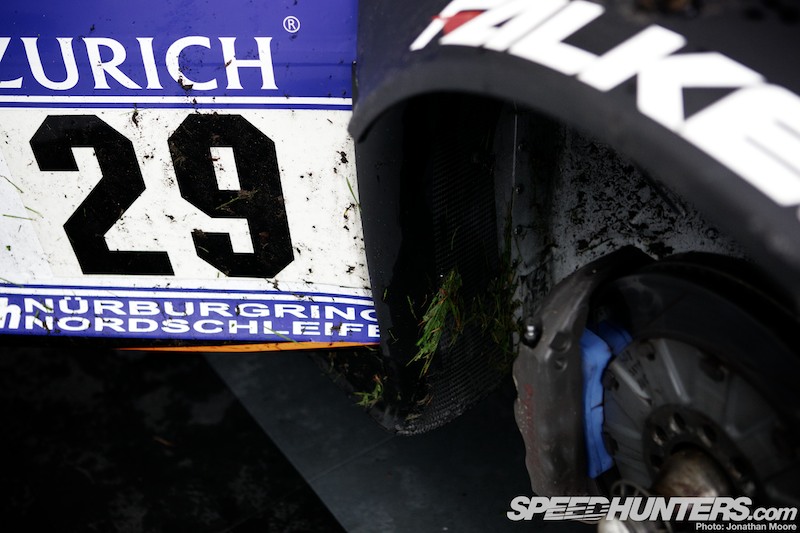
The last couple of years have been quite disappointing: we crashed out from good positions during the night in both 2011 and 2012. Therefore I really wanted to finish this year’s race.
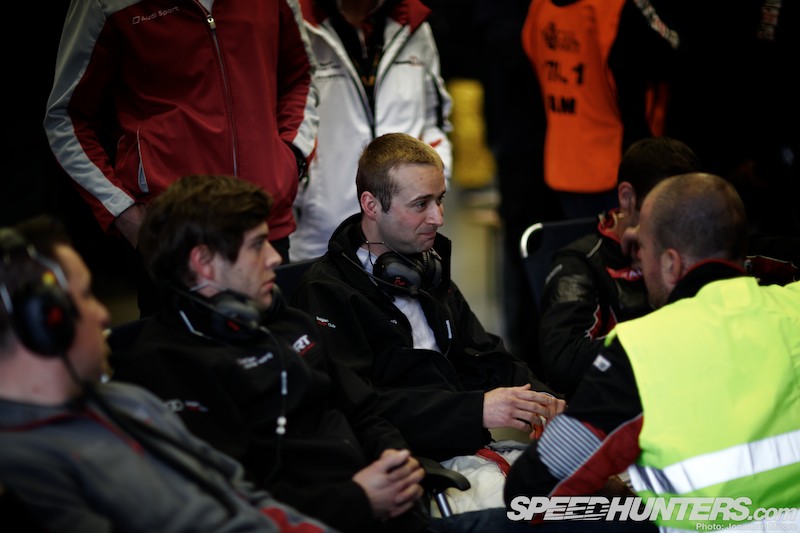
For 2013 I would be driving alongside well-known Audi colleagues in my Audi R8 LMS Ultra: Christopher Haase (who was in the winning Phoenix Audi last year), ‘Ring specialist Christopher Mies and a Nordschleife rookie in Laurens Vanthoor. Our speed wasn’t a problem at all, even though we’d struggled quite a bit in the VLN3 race in the run-up to the N24 and at a separate test, it was a relief when we started the week with a smooth car that we could drive directly, and we were all able to run top five through the practice sessions. We just tried to develop a good set-up for the race.
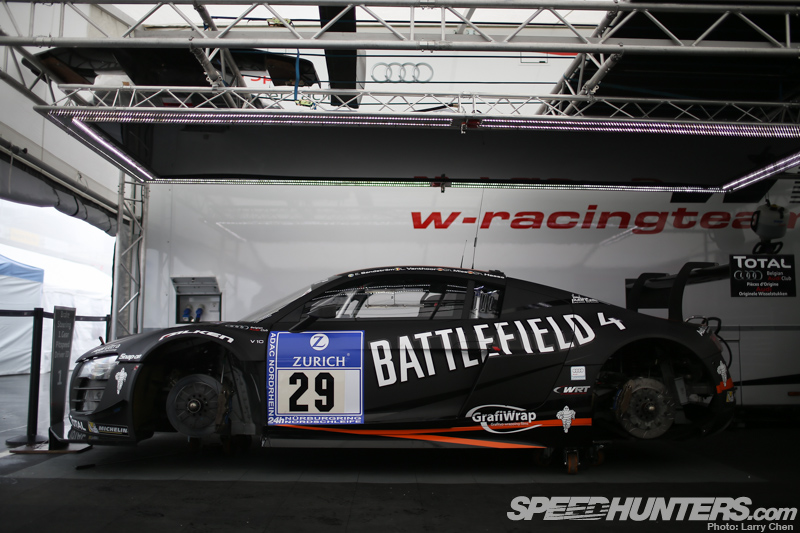
Our car had a rock-hard design from Andy Blackmore. The Battlefield brand is a good fit to the Nürburgring: it’s the hardest battle you can find the racing scene…
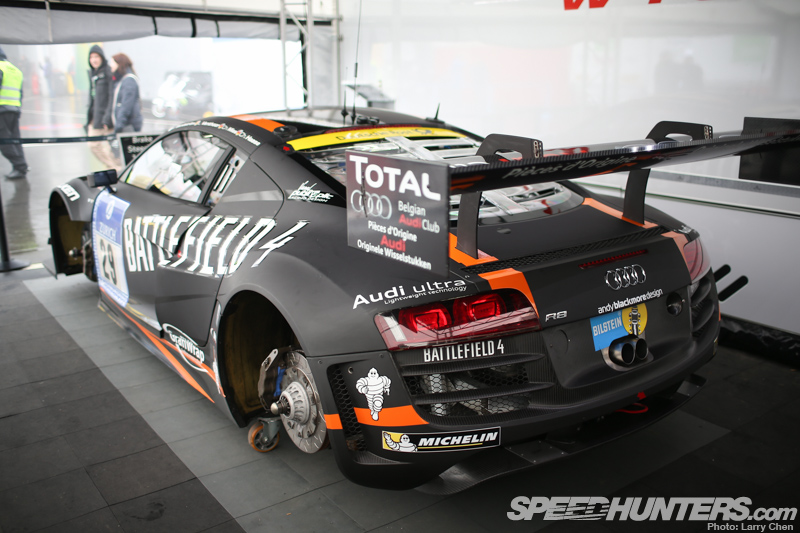
The major change for 2013 was with the mounting of the rear wing, using the ‘swan neck’ posts. We also had a new position for the exhaust to reduce possible damage if we got hit from behind. We had also developed a new diffuser, but it wasn’t approved in time by the FIA. Well you can’t get everything.
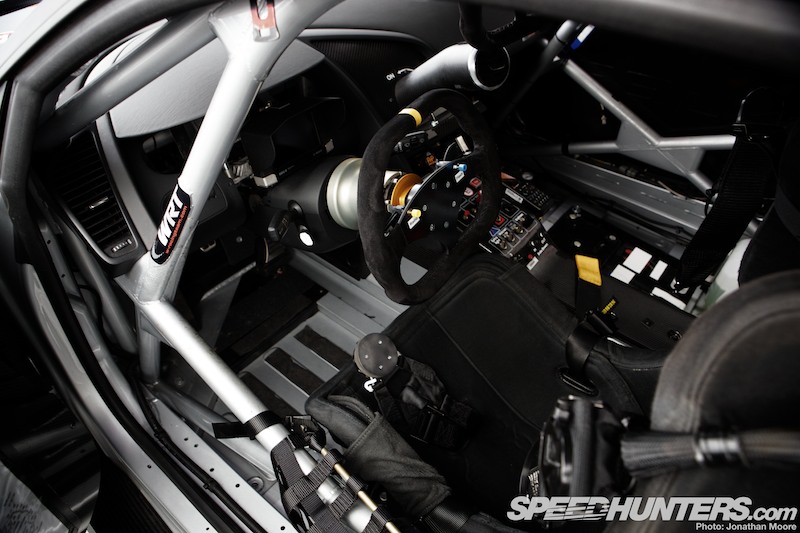
This would be my office for the week.
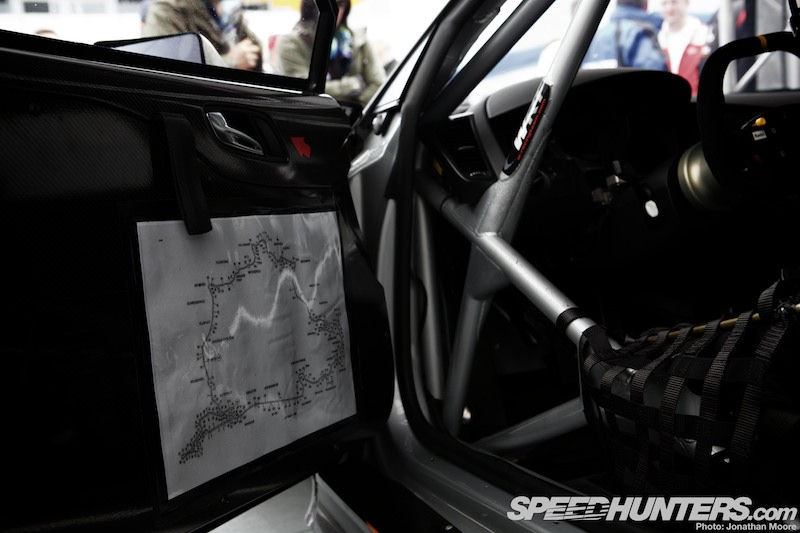
There are so many corners on the track, but race by race I’m learning them all. It’s important to know where you are when it comes to strategy.
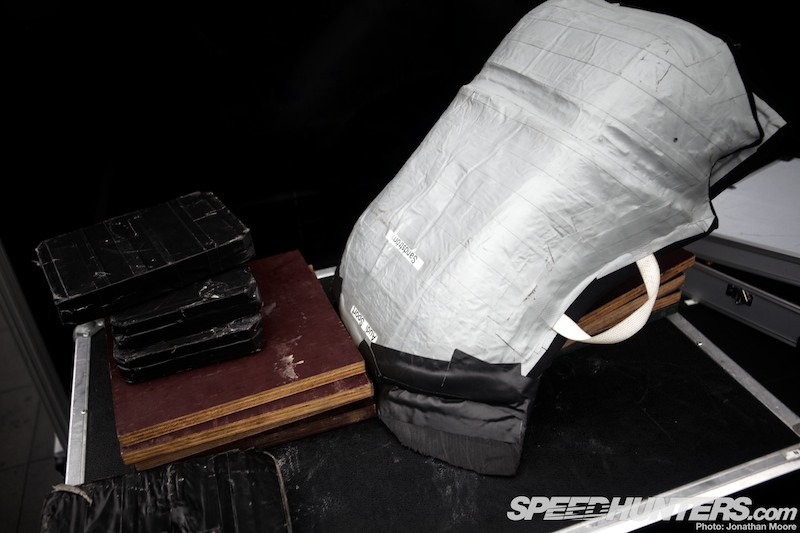
I’d made some small adjustments to my seat insert to make it fit even better over the shoulders: you can see the tape, and the handles that mean it’s easy to remove during driver swaps. It’s really important to have good support, and when you’re running up to 8-10 hours you’ve got to be comfortable.
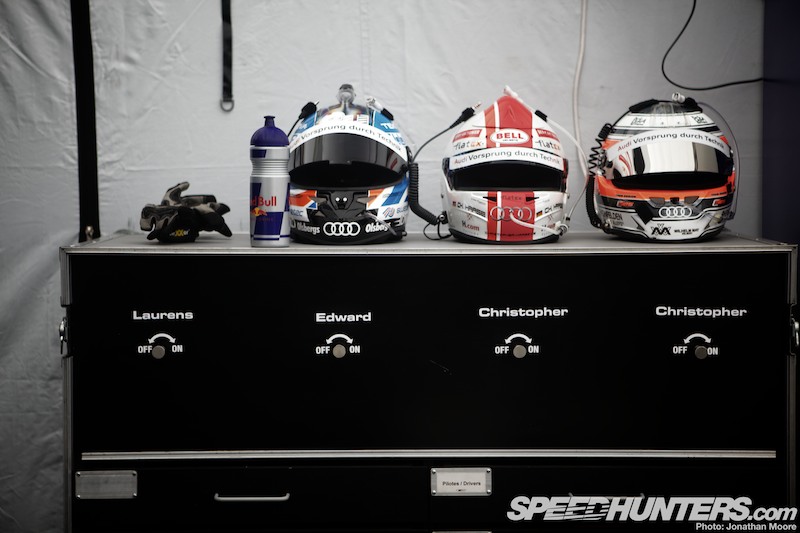
The race would be the first time I used my new helmet from Schuberth. Because I tend to dehydrate a lot I’ve been investigating which helmet has the best ventilation when using helmet cooling. Schuberth is really good in this and the fit is great. This year I’ll have two different designs, one for each sponsor. First out was the blue one made for Gluetec. The next one will be red and white for Olsbergs. The paint is done by Uffedesigns – he’s the painter of Kimi Raikkonen’s helmets.
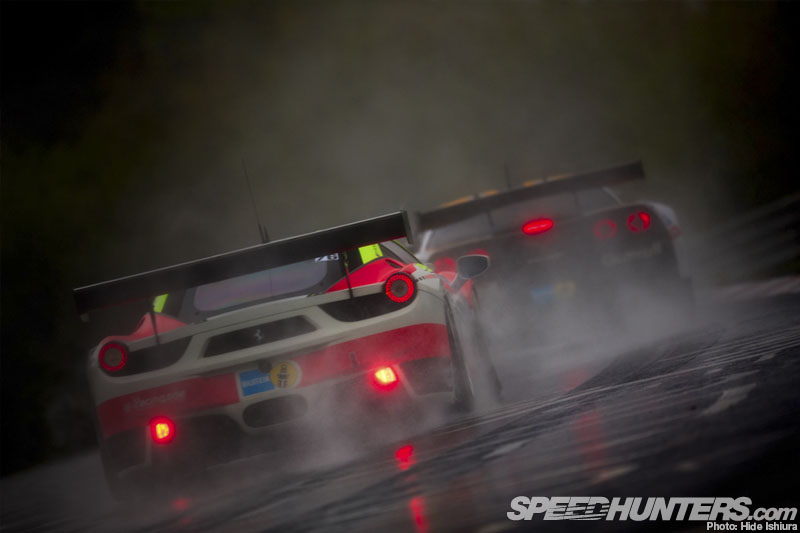
It was no secret that the weekend would be extremely wet, but you never know for sure: it can change very quickly around the Nordschleife. But when you see the amount saying 60-80mm rain you know it will be a real challenge. The only way to survive is to keep concentrating and to have a good feeling on how to keep the car on the track – but you also need to have a bit of luck, especially if you’re pushing hard.
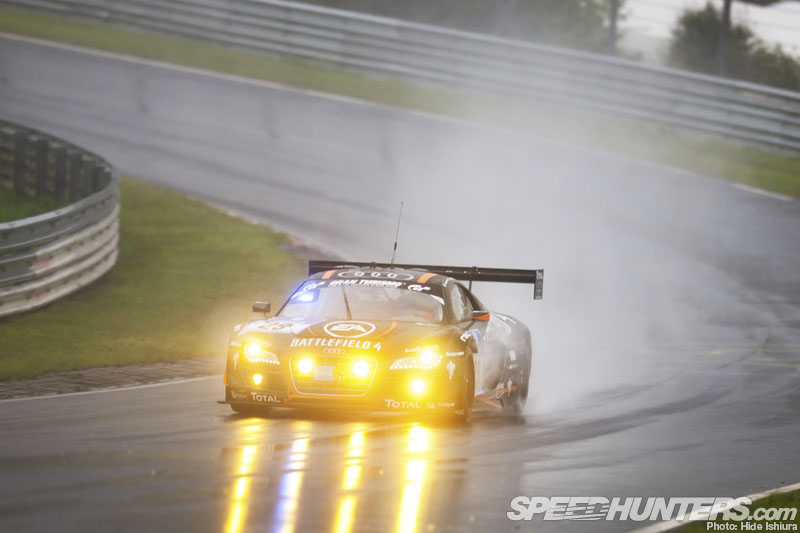
Mentally it’s much harder when the weather is this bad. If you make one small mistake there’s a big chance you’re out. In the dry you can often repair it easier. And when you can’t see, your concentration level automatically gets raised from high to super high. At least it’s less physically demanding in the rain. The hard thing when you drive in the wet is not to overdrive: you’ve got to feel what the car is doing and stay relaxed, but it’s easier to say than to do.
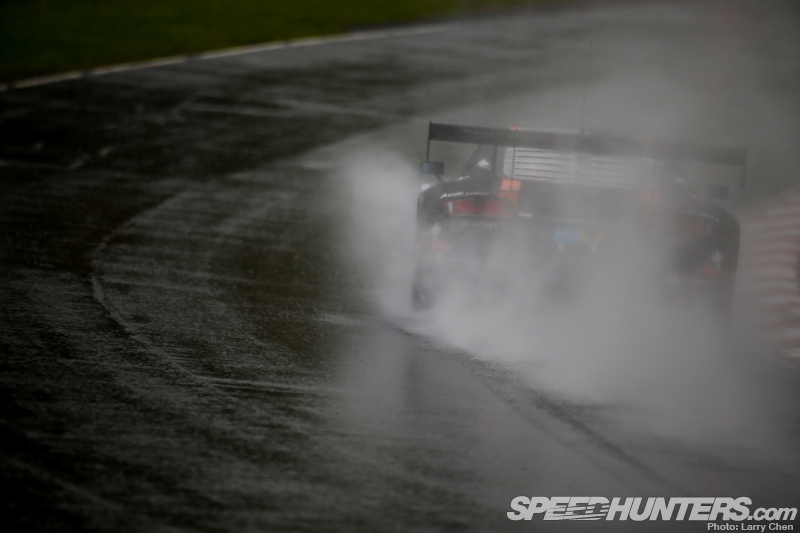
Imagine changing up to sixth gear in the darkness and feeling the car is on the limit of aquaplaning all the time and the spray of the slow car in front means you can’t see anything… I guess that’s when driving is really unpredictable. You can go from hero to zero very fast. We were all prepared for this though and also had a lot of different tyres from Michelin for the upcoming weather.
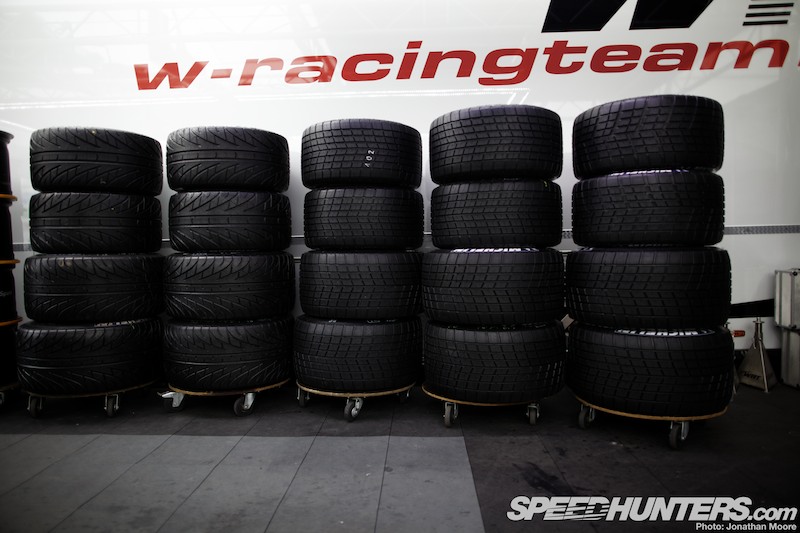
It’s massively important to put the right tyre on at the right time. It’s easy to put everything on one step too late. The good teams make the call at the right time, and tyre choice is crucial for success at the N24. The weather forecast looked horrible, and in the end Michelin cut the rain tyres even more to avoid aquaplaning.
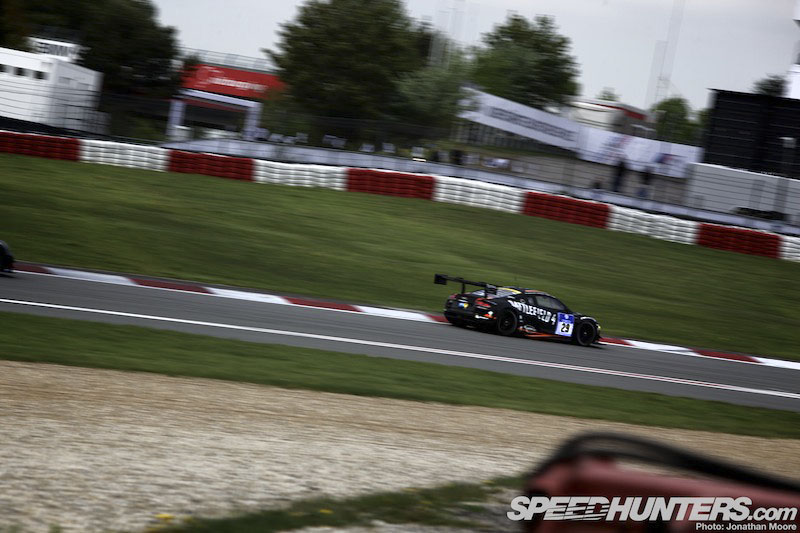
Here’s what it’s like to drive a lap. The GP track is for sure the easy part, but you don’t want to lose any time there. When entering the turn to go onto the Nordschleife, there’s a small jump out of the corner and then you are just squeezing the car against the guardrail. The first fast turn is the Hatzenbach-bogen, a small lift in fourth gear.

After that follows a technical session through Hatzenbach and Hocheichen. Here it’s important to have the right line and be well positioned before all the corners. If you turn in late you’ll lose speed.

Next one is Flugplatz and it is what it sounds like. The front of the car gets airborne in fifth gear, and you have to start to turn right as fast as you can after landing. The trick is to keep the right speed over the lift to not fly too much, because you need to be hard on the throttle again down to Schwedenkreuz. This is the fastest ‘real’ turn on the track. There’s a small lift in the middle of this one at about 240-250kph. You really have to avoid touching the pedals too hard!
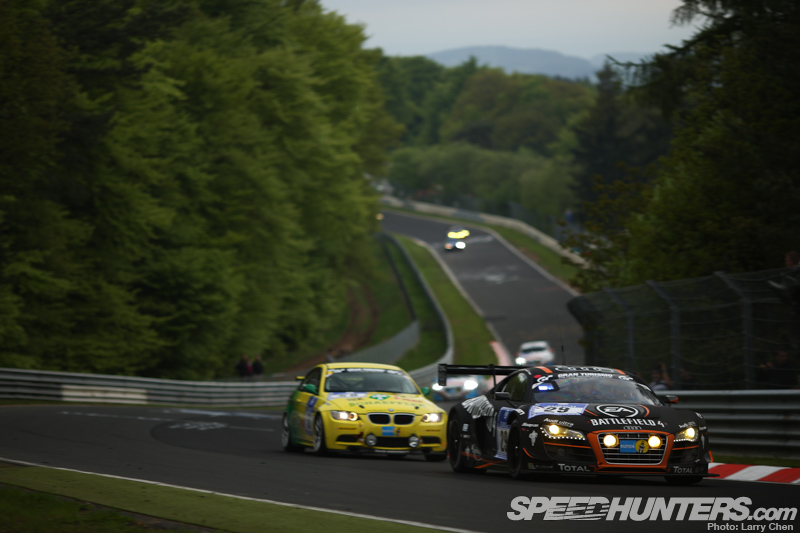
You have to brake hard into Aremberg. Fuchsröhre is flat out and the car bottoms out slightly at around 260kph. You then get a little coffee break in Adenauer Forst, which is taken in second gear. Then you come to Metzgesfeld, a fantastic corner in fifth gear, though there are no curbs at the exit so you have to avoid going wide.
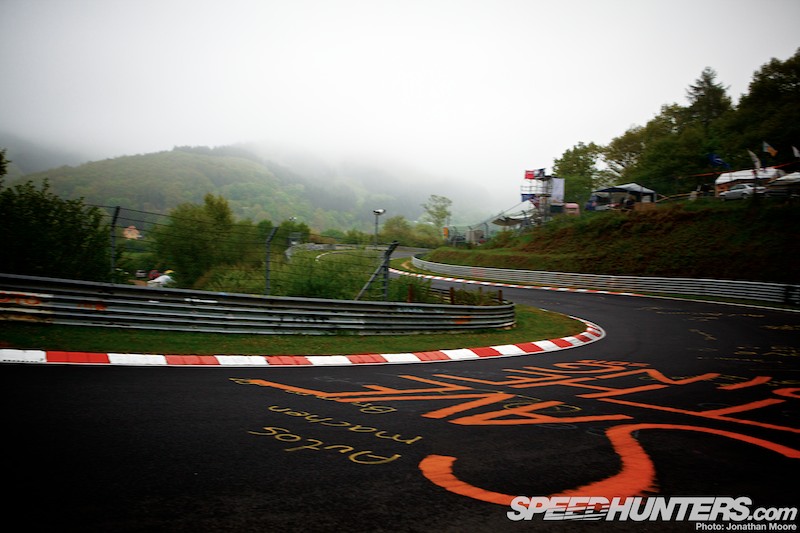
A technical section with lots of elevation changes follows. There’s a lot of new asphalt here, which has made it much faster. Braking downhill is the next experience down to Kallenhard and Breidscheid. The Lauda Kink is normally flat out and after that it’s really heavy braking into Bergwerk.
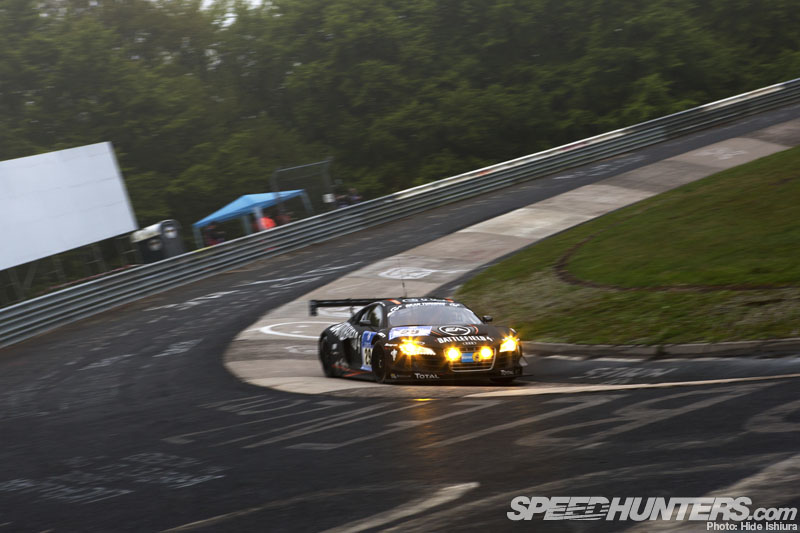
After this you’ve got another coffee break again, but now at high speed. Though in the rain it’s not so relaxing, as you’ve several small turns to take care about, but in the dry it’s just pedal down and wait for Mutkurve where you only have to slow down from 250kph to 220kph – the exit is blind when you enter. A small lift in next kink and then braking into Klostertal 2 which is taken in third gear. Next one is the Karussell: you jump into it and then you try to stay in before jumping out. Not so much feeling in that one, but anyway the braking into it is fun.
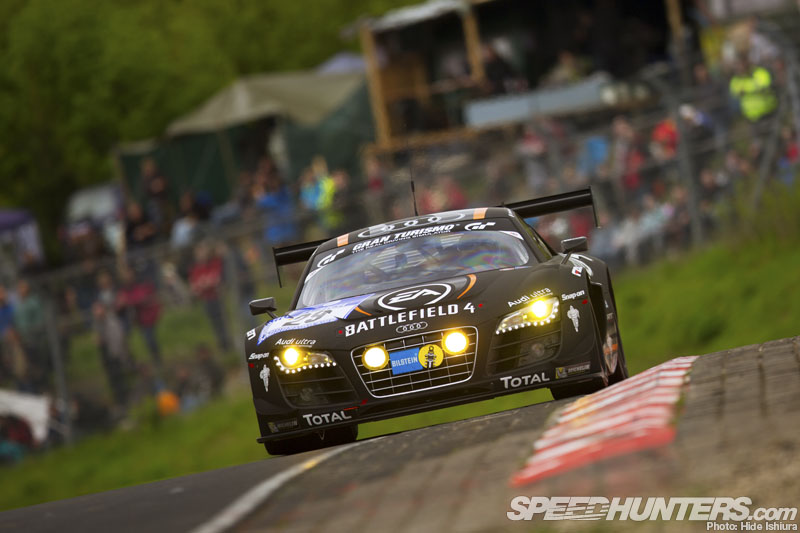
Before Hohe Acht you have a left kink which normally is flat in fourth. This section is really fun and flowing. Third gear in Hohe Acht before going to a superfast right-left-right combination called Hedwigshöhe and Wippermann. Here the line and the entry speed is important: you can’t afford to be late or slow. Also the car has to be good in changing direction. You enter the first right one flat and then brake for the second one, cut the curbs in the right one and you more or less fly out of it. At least it feels like that! Next is a blind right-hander in third gear. When you hit the concrete on the outside you know the minimum speed was okay.

It’s then time to say hello to all the people in Brünnchen. This is fast and flowing in third. Off we go to Eiscurve, a right hander that can be a bit tricky to get perfect as you can easily brake a bit too late there. You keep the sight right and you’re flat to Pflanzgarten 1. Here you can be the hero for the fans and do a long jump, but it will maybe not give you the perfect lap time. It’s better to lift a little and get settled fast to accelerate and hopefully be able to keep flat through the Kleiner Sprunghügel – which is easier when the car has a good set-up. Planzgarten 2 is flat and after that you’re like in a rollercoaster, keeping flat until Schwalbenschwanz. The new asphalt from last year makes it really fast: fourth or fifth on entry that goes into a third gear right-hander.
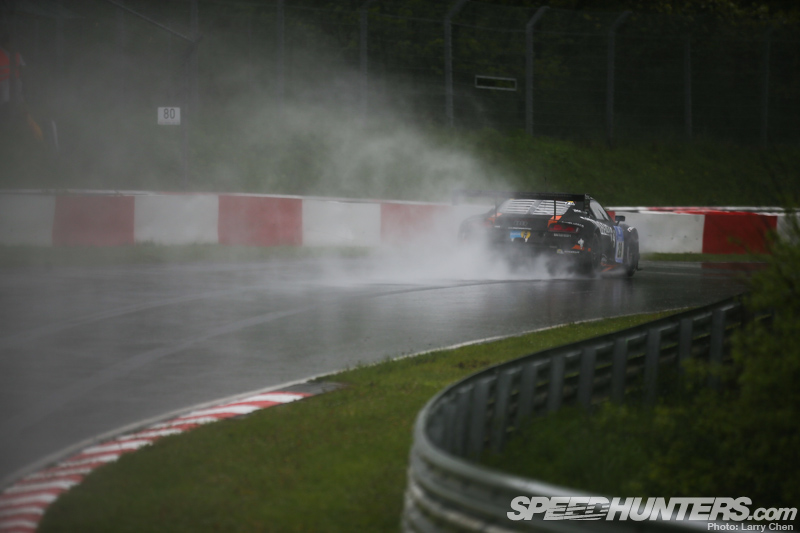
During my top 40 there was dirt here and I had a real moment, like a rally driver through the first right-hander and then take the left one on the return slide! The small Karussell follows. Much more fun then the first one. Here you can push and really fly out. Small brake into Galgenkopf. Start thinking about saying hello on the radio and give the fuel values and other valuable information. Last corner is flat out onto the Döttinger Höhe. You take a big breath and keep flat through Tiergarten before braking. In qualifying it’s possible, but for me not over a normal racing lap. The car jumps quite a lot, but with a lot of aero everything is possible. There’s just the last chicane and then you’re racing down to the finish line!
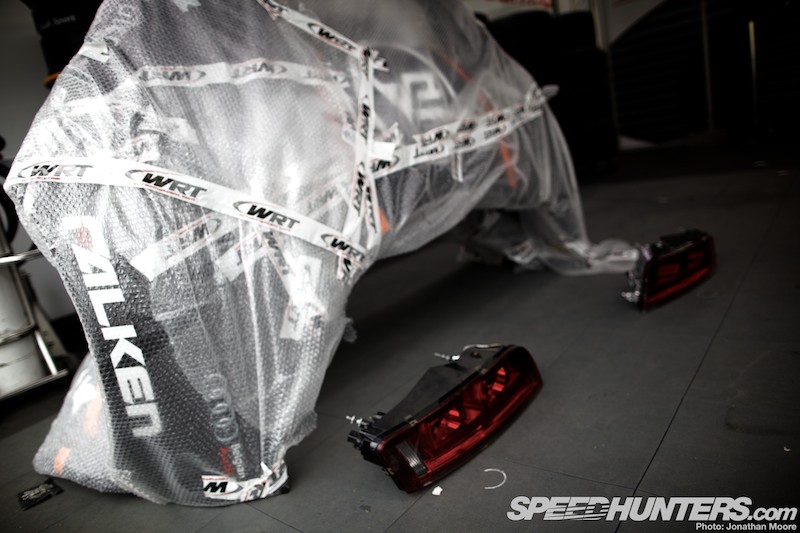
WRT are very experienced with preparing for a 24-hour race. When it comes to this they know how to do it now. I mean after two years as a works team for Audi at Spa they’ve picked up a lot of things. Apart from that they work to achieve the very best and they are developing the team all the time.
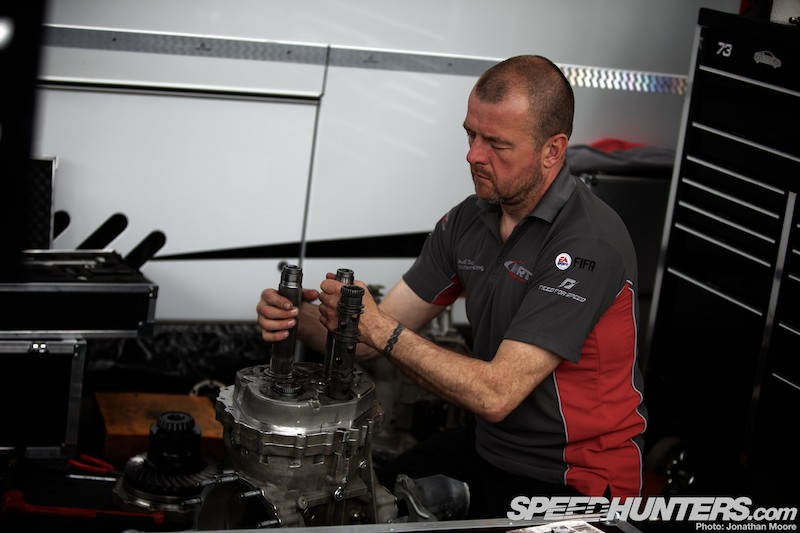
We gained some experience with WRT at the race last year, which was the first one for them. My experience says you’ve got to understand this race to be able to win it. It starts even when you reach the paddock. At VLN and Nürburgring you’d better show up on time. The one who comes first will also be served first. For the mechanics it’s tight in the garage and not maybe the best environment for working, but that’s the Nürburgring 24 Hours: amateurs and professionals are equally important.
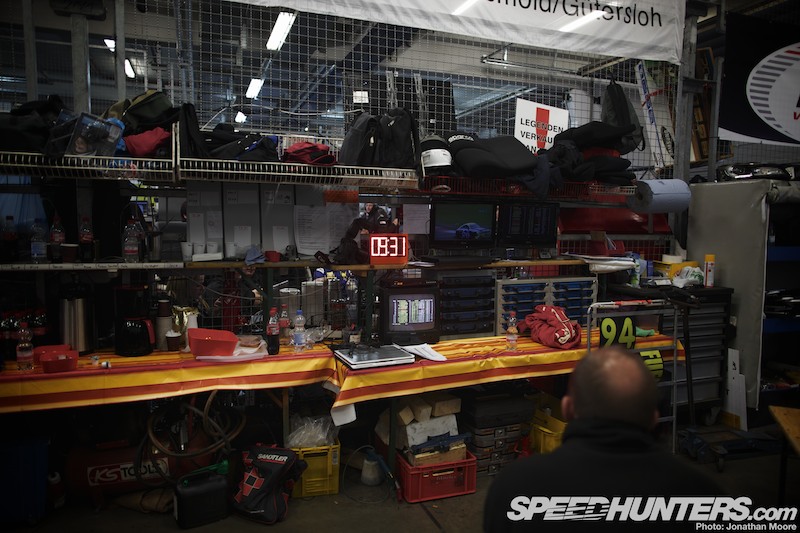
The paddock is a unique environment, with all the teams’ trucks and awnings crammed in. It makes for tough conditions for the mechanics, but it’s better than the pit garages. For any major operations on the car, like changing gearbox, all corners and so on, we always did it in the team tent. But this picture tells a lot about how it is in the garage.
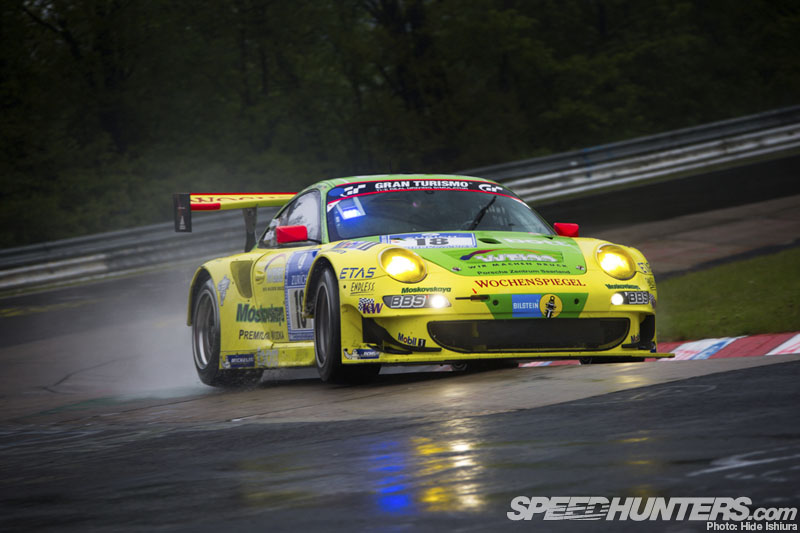
This year was the strongest field I’ve ever seen. All cars in the top 20 had very good line-ups. BMW had two teams with strong drivers. Aston Martin was one of the fastest cars in the dry and was a works entry. But the one everyone always has a eye on is the Manthey Porsche team. Because of the decision to use the GTE car it was even more difficult to predict what they had in their pocket. In Q1 he clearly slowed down on Tiergarten on a hot lap, so they were for sure sandbagging a bit. Olaf Manthey is surely the team boss who knows this event the best, and controls all the details. Though it looked like they were struggling a lot in the rain, they were never showing any symptoms of stress and didn’t take any risks. That’s when you know what you have, and what you can achieve in the moment.
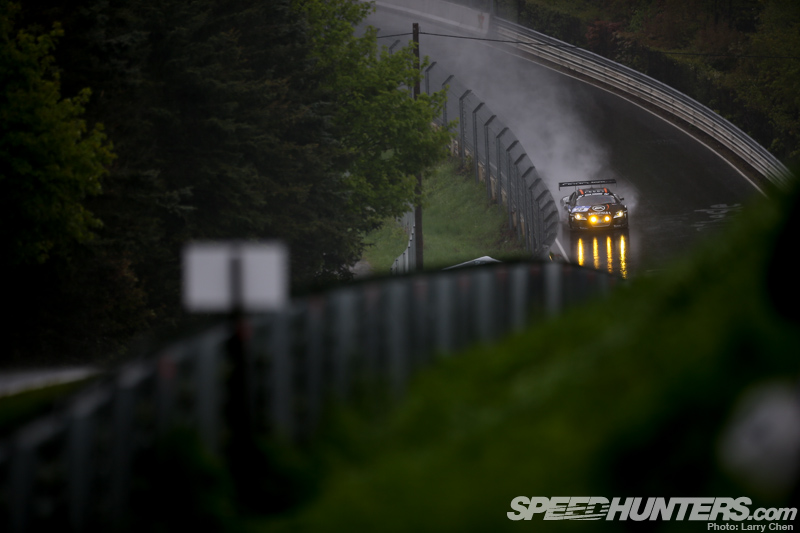
My first run of the weekend was in heavy rain in FP1. I did two installation laps and the car was key to drive even if the aquaplaning was dangerous when we entered the session. Actually I haven’t been driving too much in the rain at the Nordschliefe. I like rain, so no problem, but the track is quite different in the wet and to know small important spots can be crucial to avoid mistakes. The race is all about that. To be very fast without going outside the comfort zone. That’s why experience is vital.
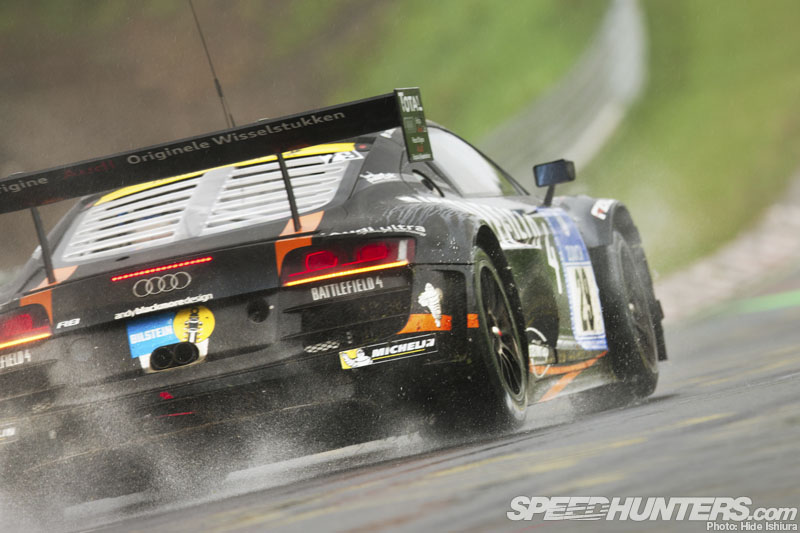
Anyway I was cruising in the rain to get comfortable and build up my speed and knowledge in the wet. The thing that asks the most of the driver in rain at Nordschleife is the high speed sections. When you lose the car there it can be game over very fast. I had one of this experiences in qualifying at VLN3. In fifth gear I lost the rear and there was no way I could catch the car with even a fast countersteer. I had a look in the data afterwards to learn and a small bump made me lose traction when I was nearly on 80% throttle. The only solution to avoid that mistake would be to drive slower or knowing that bump was there, to lift off on it. Now I know.
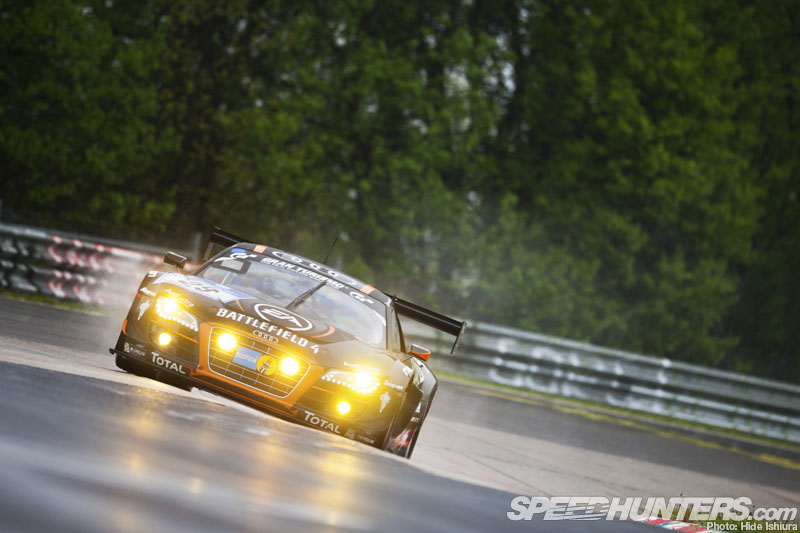
My approach to driving in the rain is to make sure I get all possible grip from the tyres down on the tarmac. I don’t steer more then the tyres can take and I try to accelerate without any slip. I know it’s fastest, but to control the slip can be very difficult. In mid-corner when off both brake and throttle you can have a fight to keep the car stable, but the best way is when you drive really without too much slip and get the grip down in the ground. It doesn’t look so cool, but it’s fast.
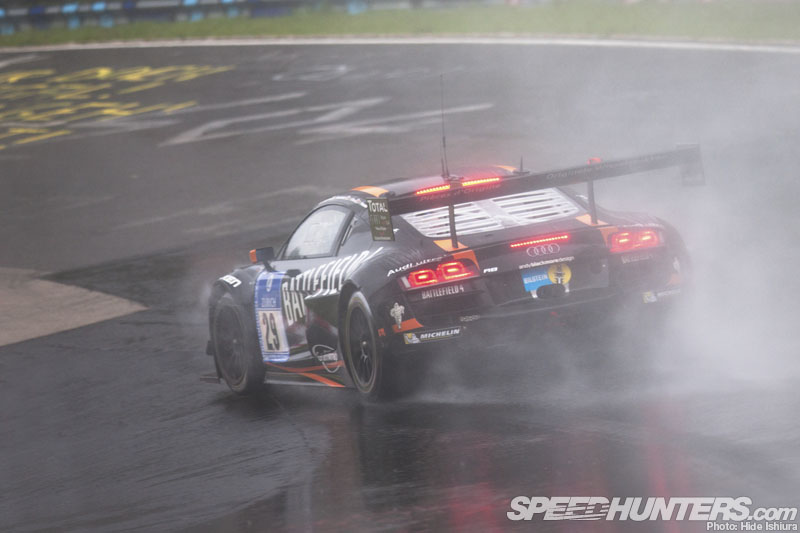
I was out first in Free Practice on Friday, which had a delayed start because of the horrible conditions. The thing to achieve was to get laps under our belts and to try out the tyre pressures in the rain. I did only two laps. In the end of the session Laurens did a really good time and everything felt promising. We finished second fastest behind the ROWE Racing Mercedes SLS, with a 10m19s lap.
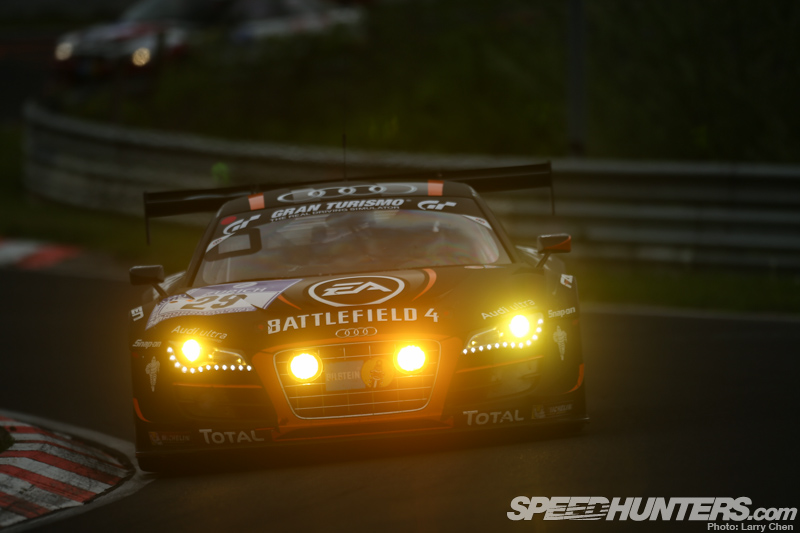
For the first qualifying session that evening we stopped a bit early, because in our plan we would change all four tyres after this session and the guys also have to sleep. We all did some driving in the dark though, as the the track was drying up. It was a good chance to check the lights as well.
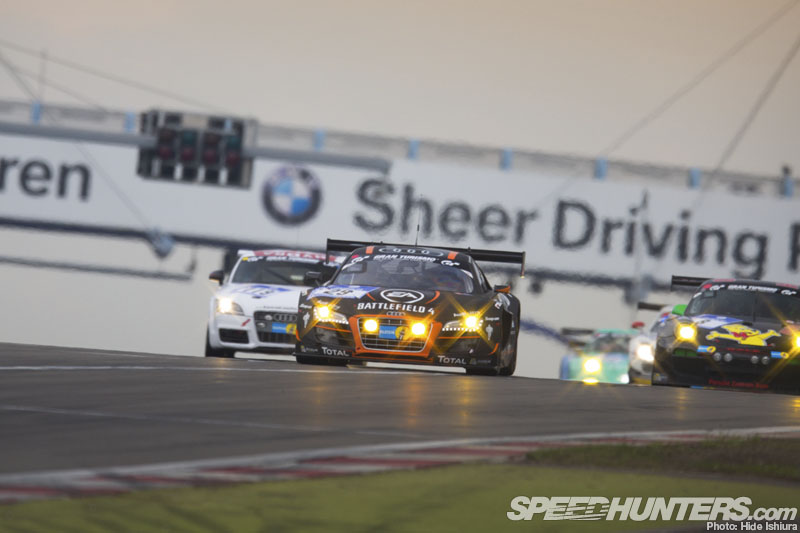
Like all the sessions before we looked to be very competitive during Qualifying 2 on Saturday lunchtime, and the goal was just to make sure we made it into the Top 40 shoot-out. We aimed to find a set-up that would be good for all conditions: maybe we would lose a bit in the dry, but this time there was no doubt it would be wet later. Again we finished second overall, this time with a 8m24s lap, less than a second behind the Black Falcon SLS, and easily into the shoot-out.
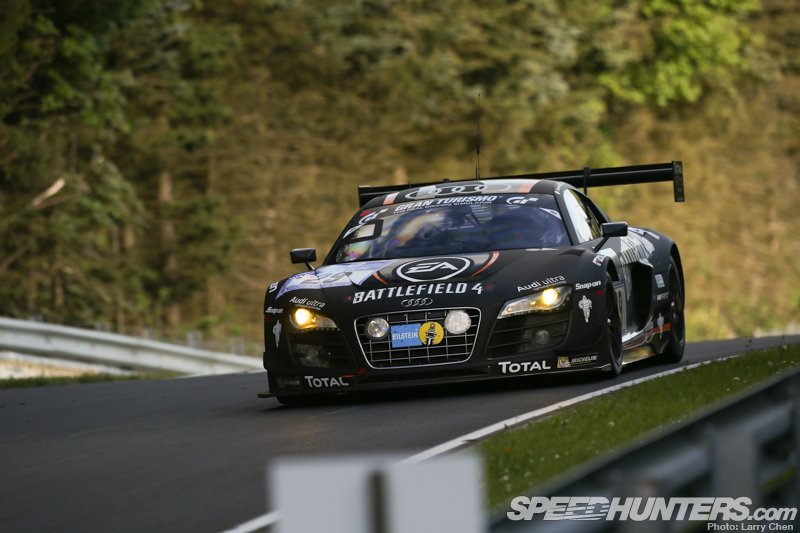
It was an exciting opportunity to be driving in the Top 40 session. We were drawn to go out 13th; we didn’t make any set-up changes to the car, and the plan was to break into the top 15. The car was good apart from one thing that spoiled the qualifying a bit: the organisers delayed the start and we had to stay in the pit without tyre heaters for about 20 minutes. My tyres were ice cold by the time we went out, but the worst issue was with the resultant tyre pressures. They went so low I couldn’t get them up during my whole warm-up lap around the Nordschleife.
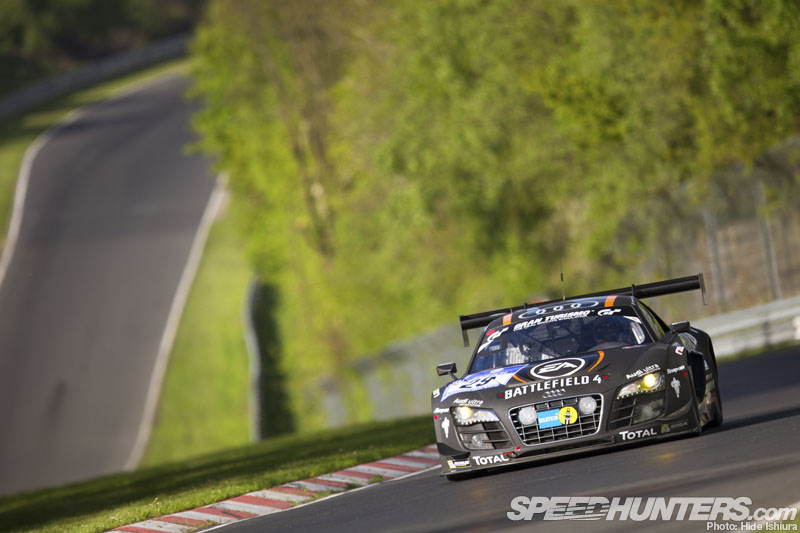
You’ve also got to pay attention to not go too fast with too low pressures, as there’s a big chance you’ll destroy the shoulder and have a puncture later. Last year the Mercedes cars were suffering from this. The first lap when the peak normally is normally was therefore not too good, though the second lap was reasonable. But there was no way I could match my usual teammate Frank Stippler, who took pole in the Phoenix Audi. But I must say with the feeling I had in the car I never really went for pole. Frank Biela was in front of me and I was getting closer and closer, but it was still really something special to get two free laps at the Nordschleife with such a car as the R8 LMS Ultra.
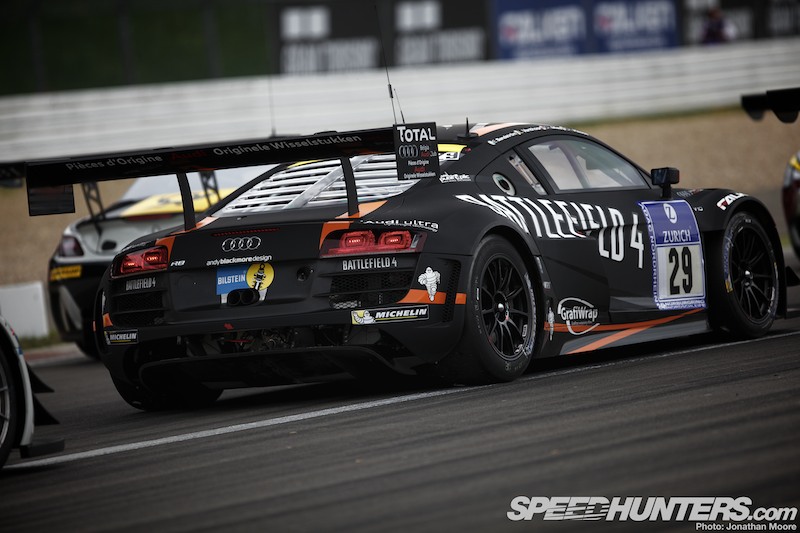
I was walking the grid for a while before the start and couldn’t go without wishing Christopher Mies a touch of luck. We didn’t have any crashes or big problems in practice, so it wasn’t too bad for the mechanics compared to how it could have been, but to start at 5pm was a bit too late in my opinion.
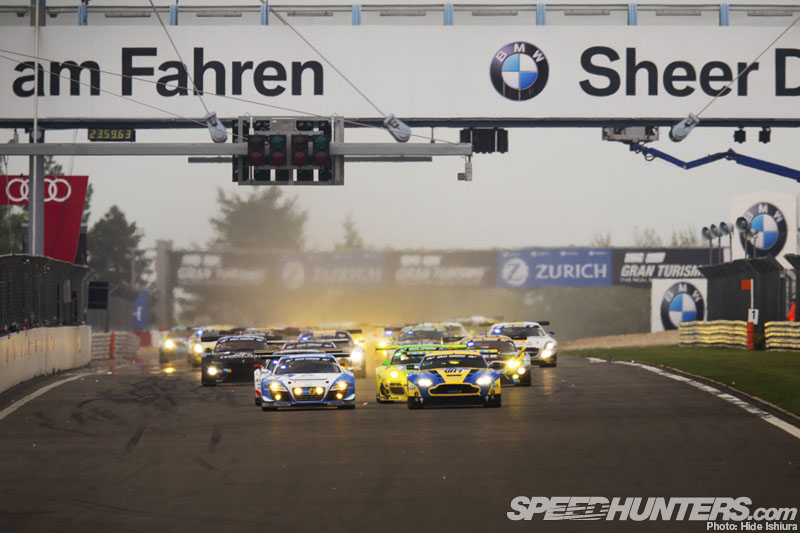
Christopher’s got plenty of experience and took it easy at the start of the race. He went a bit wide in T3 and lost some places, but just kept going. The race is about staying calm. In my eyes the ones with mental strength in the race are the ones who know when it’s time to push and when it’s time to have a bit of safe mode. Mies has done enough races at the Nordschliefe to know this.

Pit stops are very challenging because of how tight it is in the pit lane. You make sure the others know when you’re about to stop, so the fuel pump is free. Actually the only thing you want is to start the refuelling as fast as possible. When it comes to repairs I don’t think you can really plan. You can only prepare the parts, so it’s quick to change things in an emergency.
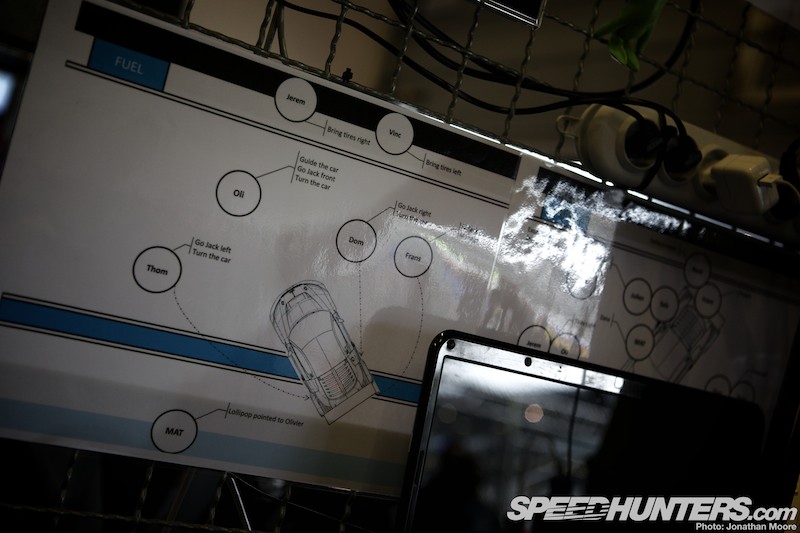
WRT had a set operating plan for the pit crew. When everybody knows what to do, everything goes much smoother. We use the ‘go jacks’ to position the car while refuelling. So if it’s crowded we only drive in and the mechanics take care of the rest. But there’s no real rush as refuelling takes nearly three minutes.

There were problems early in the race for the Abt R8 we were sharing a garage with. They were running a bit too low I think and destroyed the splitter of the car, but I’m not sure. The track can grind the car away if you set up your car too low. When you land after the jumps and bottom out too much the car will definitely be stressed.
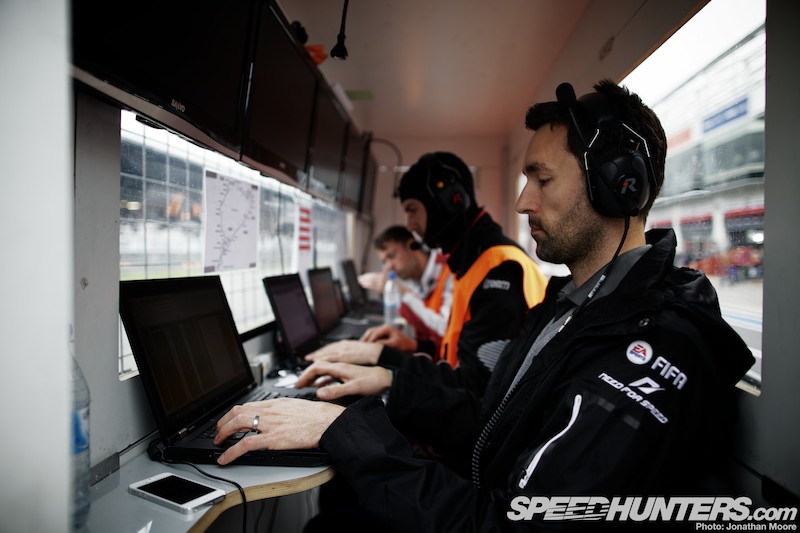
We had Patrick Söderlund running strategy again, who I drove with in FIA GT3 in 2010. He’s now got a lot of experience with this race, though we’ve still got to win it to close the case.

So into the evening the race was going well. We were taking place after place and everything was running smoothly. The times from Mies’ second stint and Haase’s first stint were very competitive. Traffic is a part of the game. After a while in the race you start to know the opposition – at least the cars. But the drivers can act really differently, so you need to keep some distance to avoid any unnecessary contact.
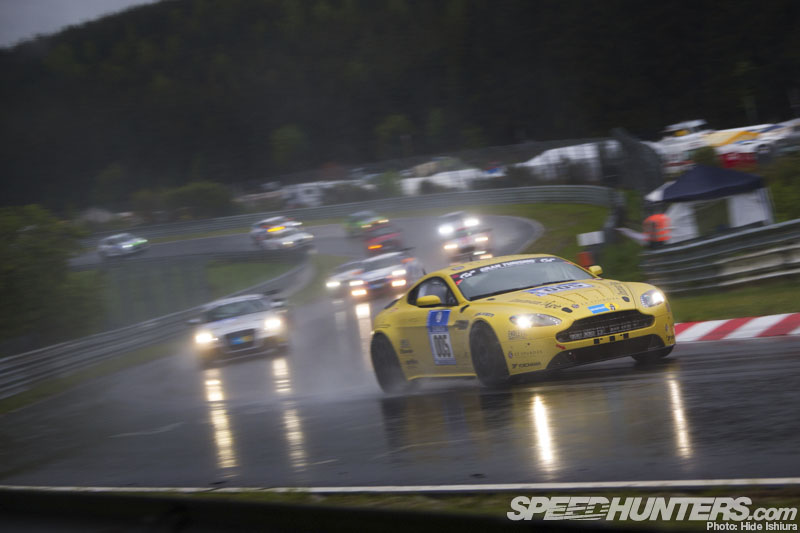
My rule is to overtake a slower car on the inside and be at least halfway alongside on entry to a corner. The best way is when you feel they’ve seen you, then you can make the pass as smooth as possible. The worst thing is the guys who don’t want to let you past and try to race you without any meaning.
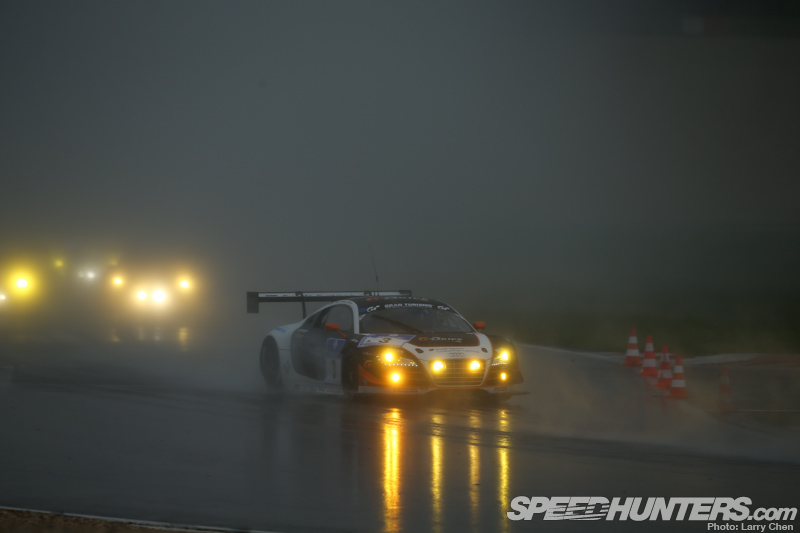
But the race came to a temporary halt for everyone around 11pm when the rain came lashing down, the visibility dropped to zero and the red flag was waved.
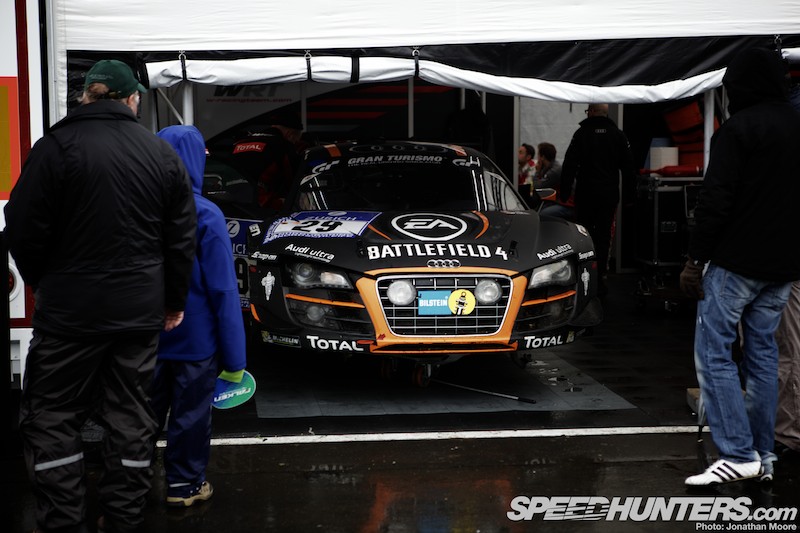
After the restart early on Monday morning our race didn’t last long: we were forced to retire after Laurens Vanthoor went off in the wet on oil at Bergwerk.
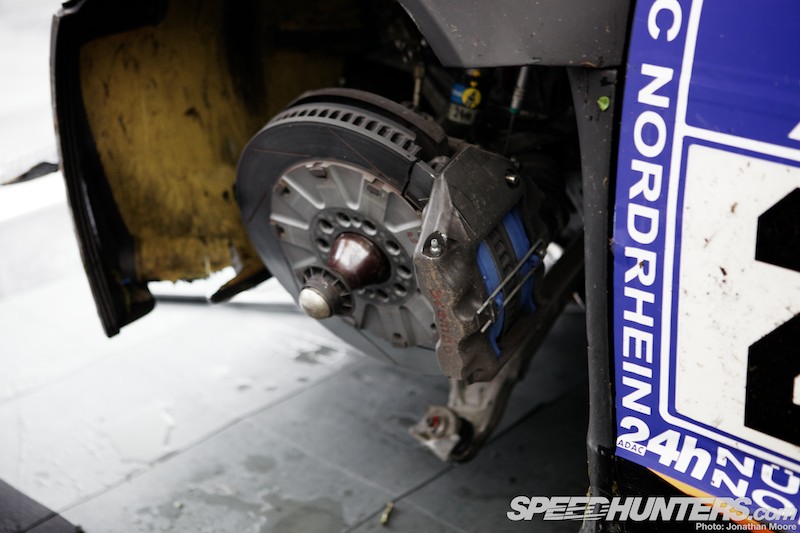
Three corners were damaged. We had already had an off in the dark the previous evening before the race was red-flagged, so I guess one more complete repair wasn’t an option.
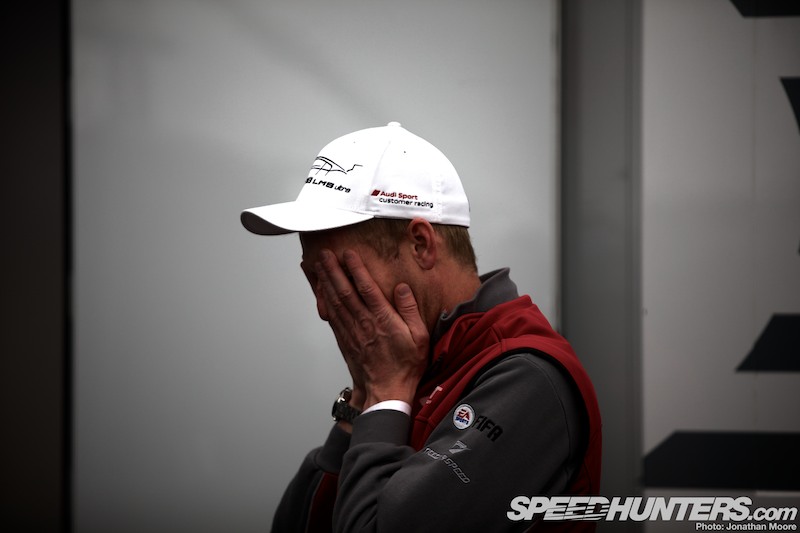
I hadn’t even got to drive! There’s not much more to say other than that I was hugely disappointed. Laurens was okay and for sure that’s the most important thing: you take a big amount of risk out there. We had been running fourth, so we were definitely in the fight for the win again.
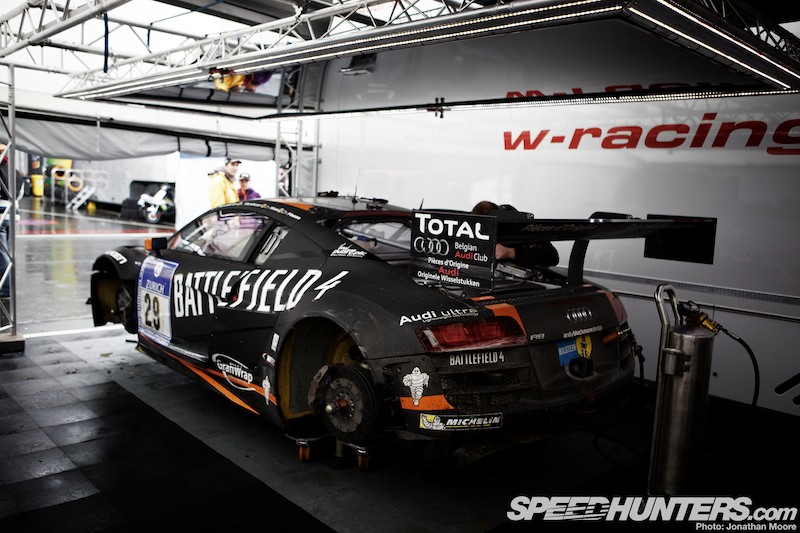
Again it was game over. The book of lessons is starting to get long. Next year I hope we can actually finish the race.
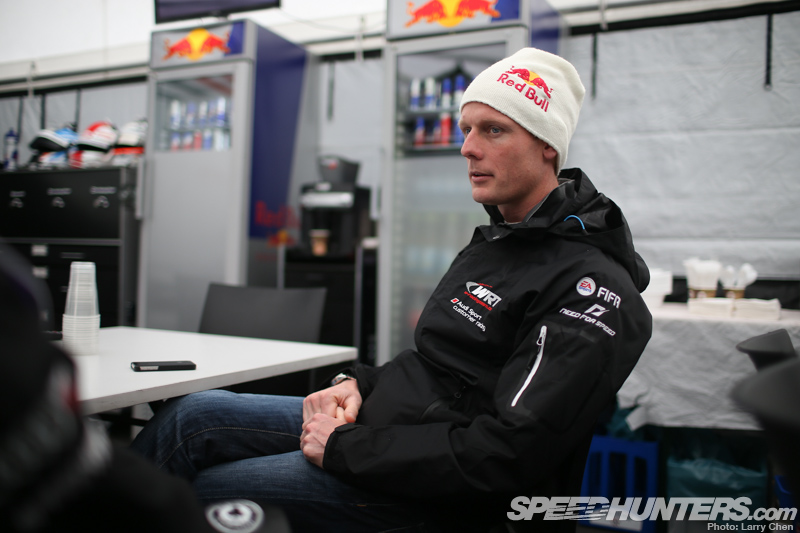
At least we were competitive as ever, though not strong enough to predict the risk to take the car to the flag. It’s hard to slow down when you’re fast, but if you can’t guarantee the car will be safe all the way back to the next stop you’re probably too fast. This race is really hard for the driver. But that’s also the fun thing with it. I’m racing at Silverstone this weekend, where I’m hoping to strike back and have a fun weekend in the UK. It’s the fantastic Blancpain Endurance Series with around 60 GT3-cars on the grid: there will definitely be some exciting racing.
All the best!
Edward
Photos by Jonathan Moore, Larry Chen and Hide Ishiura
Speedhunters at the Nürburgring
Edward Sanstrom on Speedhunters





